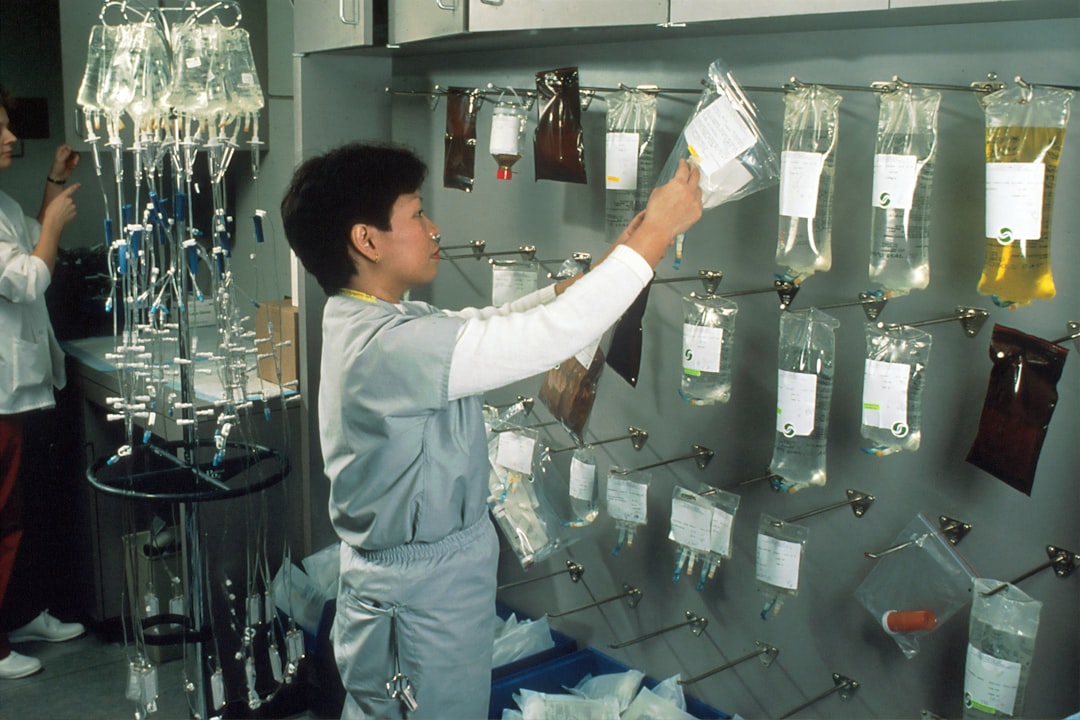In-home ABA therapy has emerged as a game changer in the realm of autism treatment, offering both convenience and effectiveness. This innovative approach allows therapists to deliver personalized care within the comfort of the child’s home, fostering a familiar learning environment. Moreover, as families increasingly seek tailored solutions, in-home ABA therapy accommodates individual needs while promoting engagement. By understanding its benefits and functionality, parents can make informed decisions that significantly impact their child’s development. In this blog post, we will explore the ins and outs of in-home ABA therapy, highlighting the advantages it brings to families striving for a positive therapeutic experience.
Understanding In-Home ABA Therapy
In Home ABA Therapy is a specialized form of behavior therapy designed to meet the unique needs of children diagnosed with Autism Spectrum Disorder (ASD) and other developmental challenges. This therapy utilizes Applied Behavior Analysis (ABA) principles, focusing on reinforcing positive behaviors while reducing undesirable ones.
Key Features of In Home ABA Therapy:
- Personalized Environment: Sessions occur in the child’s familiar home setting, which helps create a comfortable atmosphere, reducing anxiety and improving focus.
- One-on-One Attention: Therapists work individually with the child, allowing for tailored strategies that directly address the child’s specific behaviors and needs.
- Family Involvement: In Home ABA Therapy encourages active participation from family members, fostering a supportive environment that reinforces learning and behavior change in real-time.
- Flexible Scheduling: Families can choose convenient times for therapy sessions, ensuring regularity and consistency without disrupting the household routine.
Benefits of Understanding In Home ABA Therapy:
- Improved Generalization of Skills: Skills learned during therapy can be seamlessly integrated into daily family life, which enhances the child’s ability to use these skills in various settings.
- Reduced Stress for Families: With sessions at home, parents can better manage daily responsibilities while supporting their child’s therapy process.
- Enhanced Communication: Families receive valuable insights and training from therapists on behavioral techniques, leading to improved communication strategies throughout the household.
In summary, In Home ABA Therapy offers a flexible, effective way to deliver behavioral interventions while ensuring that children learn in a familiar, supportive environment.

Benefits of In-Home ABA Therapy
In Home ABA Therapy offers numerous advantages that significantly contribute to the effectiveness of treatment. Here are some key benefits:
- Familiar Environment: Conducting therapy in a child’s natural setting promotes comfort and reduces anxiety, allowing for more effective engagement.
- Individualized Attention: Therapists can focus solely on one child during sessions, providing personalized techniques tailored to specific needs.
- Parental Involvement: Parents can observe and learn strategies during therapy sessions, enabling them to reinforce skills outside of therapy time.
- Flexibility in Scheduling: In Home ABA Therapy allows for customized scheduling that accommodates family routines and complex life situations.
- Real-Life Applications: Therapists can implement strategies within the context of everyday activities, making learning more relevant and practical.
Comparison Table: In Home vs. Center-Based ABA Therapy
| Benefit | In Home ABA Therapy | Center-Based ABA Therapy |
|---|---|---|
| Comfort of Environment | High | Moderate |
| Individual Attention | High | Variable |
| Parental Involvement | Direct & Active | Limited |
| Flexibility in Scheduling | High | Low |
| Real-Life Situational Learning | Immediate & Practical | Controlled Environment |
In summary, the benefits of In Home ABA Therapy contribute to a more effective therapy experience by fostering an environment where children feel safe, supported, and engaged. This therapy approach leads not only to skill acquisition but also to long-term growth and development.
How In-Home ABA Therapy Works
In Home ABA Therapy operates through a structured, personalized approach designed to address the individual needs of children on the autism spectrum. Here’s a breakdown of how the process typically unfolds:
- Assessment: A Board Certified Behavior Analyst (BCBA) conducts a thorough assessment to understand the child’s unique behaviors, strengths, and areas for improvement.
- Goal Setting: Based on the assessment, the BCBA develops specific, measurable goals that target areas such as communication, social skills, and daily living skills.
- Customized Treatment Plan: The created plan is tailored to the child’s needs, preferences, and family dynamics, ensuring maximum engagement and effectiveness.
- Implementation: Trained therapists deliver the therapy in the child’s home, using fun and interactive methods to maintain interest and facilitate learning.
- Data Collection and Analysis: Therapists take ongoing data to track the child’s progress against the set goals. This continuous feedback loop helps refine strategies, ensuring that therapy remains effective.
- Family Involvement: Parents play a crucial role in In Home ABA Therapy. They receive guidance on how to reinforce skills outside of sessions, which enhances generalization of learned behaviors.
Comparing In Home ABA Therapy to Center-Based Therapy
| Aspect | In Home ABA Therapy | Center-Based ABA Therapy |
|---|---|---|
| Environment | Familiar home setting | Structured center environment |
| Flexibility | Customizable schedules | Fixed hours |
| Family Involvement | Direct involvement in sessions | Limited family participation |
| Travel Time | No travel required | Requires travel |
In summary, In Home ABA Therapy combines professional expertise with a comfortable environment, making it both effective and convenient for families.
Differences Between In-Home and Center-Based ABA Therapy
When choosing the right approach for Applied Behavior Analysis (ABA) therapy, understanding the differences between In Home ABA Therapy and center-based therapy is crucial. Both methods aim to improve behavioral outcomes, but they cater to distinct needs and preferences.
| Aspect | In Home ABA Therapy | Center-Based ABA Therapy |
|---|---|---|
| Environment | Familiar, comfortable home setting | Structured clinical environment |
| Flexibility | Customizable schedule & sessions | Fixed hours and availability |
| Family Involvement | Parents actively participate | Less family interaction during sessions |
| Generalization of Skills | Focus on real-life application | May require additional practice in real-world settings |
| Cost | Often more affordable | May include travel or facility fees |
Key Differences
- Environment: The intimate and familiar atmosphere of In Home ABA Therapy encourages children to engage more openly. In contrast, center-based therapy may feel intimidating in a clinical setting.
- Flexibility: Scheduling in-home sessions offers greater flexibility, making it easier to adapt therapy to family routines and commitments.
- Family Role: In-home therapy emphasizes parental involvement. Parents gain valuable strategies to reinforce skills during daily activities.
- Skill Application: Skills learned at home can directly translate to everyday situations, enhancing practicality and generalization.
In summary, both types of therapy offer unique advantages. Choosing the right one often depends on the child’s specific needs, family dynamics, and desired outcomes.

Convenience Factors of In-Home Therapy
In Home ABA Therapy offers several convenience factors that significantly enhance the therapeutic experience for both children and parents. Here are some key aspects that highlight its advantages:
- Familiar Environment: Conducting therapy in the home setting helps children feel more comfortable and secure, which can increase engagement and participation during sessions.
- Flexible Scheduling: Unlike center-based therapy, In Home ABA Therapy provides flexibility in scheduling appointments. Families can choose times that best fit their routines, reducing stress and logistical challenges.
- Immediate Support: Families benefit from having immediate access to support whenever needed. Parents can consult with their ABA therapists on-the-spot for guidance on specific behaviors or challenges that arise throughout the day.
- Integration with Daily Routines: In Home ABA Therapy allows therapists to integrate therapeutic techniques into everyday activities. This not only makes learning more relevant but also reinforces skills in real-life situations.
- Siblings and Family Involvement: Siblings and other family members can participate in sessions, promoting a supportive environment. This inclusion can help improve relationships and foster understanding of individual needs.
Comparison of In Home vs. Center-Based ABA Therapy
| Convenience Factor | In Home ABA Therapy | Center-Based ABA Therapy |
|---|---|---|
| Environment | Familiar and comfortable | Structured, less familiar |
| Scheduling | Flexible and accommodating | Fixed hours |
| Immediate support | Available immediately | Limited to session times |
| Daily routine integration | High potential for integration | Low integration |
| Family involvement | Strong encouragement | Less involvement |
In conclusion, the convenience factors of In Home ABA Therapy make it a beneficial option for families seeking effective treatment. By eliminating barriers and creating a personalized space for learning, it paves the way for successful outcomes.
Effectiveness of In-Home ABA Therapy
In Home ABA Therapy has proven to be a highly effective treatment method for children with autism and other developmental disorders. Studies reveal that the effectiveness of this approach often surpasses traditional center-based therapy due to several unique factors.
Key Factors Driving Effectiveness:
- Natural Environment:
- In Home ABA Therapy occurs in a familiar setting, which helps children feel more relaxed and receptive to learning. This familiarity can lead to better engagement and quicker progress.
- Real-life Situations:
- Therapists can address specific behaviors in context, allowing for tailored interventions that parents can easily replicate. For instance, working on social skills during family meals or playtime enhances real-world application.
- Increased Parental Involvement:
- The at-home setting allows parents to actively participate in sessions. This collaboration is crucial in reinforcing learning, which often accelerates behavior change.
Comparison Table: In Home vs. Center-Based ABA Therapy
| Aspect | In Home ABA Therapy | Center-Based ABA Therapy |
|---|---|---|
| Environment | Familiar and comfortable | New and potentially intimidating |
| Parental Involvement | High (actively involved) | Limited (observational) |
| Contextual Learning | Real-life situations leveraged | Controlled settings |
| Flexibility of Scheduling | More adaptable | Fixed schedule |
In conclusion, the effectiveness of In Home ABA Therapy is significantly enhanced by its focus on customizable, real-world applications and active parental involvement, making it a commendable choice for many families seeking effective behavioral therapies.
Customization of Treatment Plans
In Home ABA Therapy offers a unique advantage when it comes to tailoring treatment plans specifically to meet the individual needs of a child. This customization not only enhances the therapy’s effectiveness but also provides a more relatable and nurturing environment. Here are some key aspects of how treatment plans can be customized in this setting:
- Individualized Assessment: Each child undergoes a thorough assessment, allowing therapists to identify specific strengths, challenges, and preferences.
- Flexible Goals: Treatment goals can be adjusted over time based on the child’s progress and changing needs. This flexibility ensures that the therapy remains relevant and effective.
- Real-Life Application: Therapists can incorporate everyday scenarios into the treatment plan. This method helps children learn and practice skills in settings where they naturally occur, reinforcing learning.
Comparison: Customization in In-Home vs. Center-Based ABA Therapy
| Feature | In Home ABA Therapy | Center-Based ABA Therapy |
|---|---|---|
| Assessment | Personalized, home-based | Standardized, clinic-focused |
| Treatment Goals | Dynamic and adaptable | Often fixed, less flexible |
| Real-World Context | Integrated with daily life | Limited to the clinical environment |
Through In Home ABA Therapy, parents play an integral role by providing insights that further shape the treatment plan. Engaging parents in the process creates a continuous feedback loop, ensuring the therapy remains aligned with the child’s unique requirements. Thus, customization becomes a cornerstone of effective and impactful therapy.

The Role of Parents in In-Home Therapy
In In Home ABA Therapy, parents play a crucial role in their child’s progress and overall success. Their involvement not only strengthens the therapeutic process but also enhances the consistency of applied behavior analysis strategies throughout the week. Here’s how parents can actively participate:
- Collaboration with Therapists: Parents work closely with ABA therapists to set achievable goals and share insights about their child’s behavior in different settings. This creates a comprehensive understanding of the child’s needs.
- Implementation of Strategies: With guidance from the therapist, parents can implement techniques learned during sessions. This consistency fosters an effective learning environment, reinforcing positive behaviors.
- Monitoring Progress: Parents are essential in tracking behavioral changes and progress. By noting how their child responds to various strategies, they provide valuable feedback that can adjust treatment plans as needed.
- Creating a Supportive Environment: Parents can establish routines and a structured environment that encourages skill development and reduces distractions, aligning with the goals of In Home ABA Therapy.
- Emotional Support: Offering encouragement and understanding, parents serve as emotional anchors for their children, which can significantly impact the therapy’s effectiveness.
In conclusion, the active participation of parents in In Home ABA Therapy not only empowers them but also ensures that the therapeutic strategies are embedded within the child’s daily routines, thereby amplifying the overall impact of the therapy.
Challenges of In-Home ABA Therapy
While In Home ABA Therapy offers numerous benefits, it does come with its own set of challenges that families may encounter. Understanding these challenges is crucial for successfully navigating the therapy process. Here are some key issues to consider:
- Distractions at Home: Unlike a controlled environment, home settings can be filled with various distractions, such as siblings, pets, or household chores, which may hinder focus during therapy sessions.
- Space Limitations: Not all homes provide sufficient space for the activities and equipment that may be necessary for effective therapy, impacting the quality of the sessions.
- Consistency: Maintaining a consistent routine can be challenging in a home environment where unpredictable events might disrupt planned sessions. This inconsistency can impact the therapeutic outcomes.
- Parental Involvement: While parental participation is usually beneficial, it can also lead to added pressure. Parents may feel overwhelmed by various demands during therapy, making it difficult to be fully engaged.
- Therapist Compatibility: Finding the right In Home ABA Therapy provider can be a challenge. It’s important for families to ensure that the therapist not only has the necessary qualifications but also matches the family’s unique dynamics.
To address these challenges, open communication with the therapist, maintaining a structured home environment, and setting realistic expectations can significantly enhance the effectiveness of In Home ABA Therapy.
Finding the Right ABA Therapist for In-Home Sessions
Selecting the right ABA therapist for in-home sessions is crucial for ensuring an effective treatment experience. Here are key factors to consider:
- Qualifications and Training: Look for a therapist with relevant credentials, such as a Board Certified Behavior Analyst (BCBA). This ensures they are trained to deliver In Home ABA Therapy effectively.
- Experience with Specific Needs: It’s important to find a therapist who has experience working with your child’s unique challenges. Ask about their previous cases and outcomes.
- Communication Style: Strong communication skills are essential. The therapist should be able to explain strategies clearly to both you and your child, fostering a collaborative environment.
- Flexibility: In-home therapy requires adapting to various circumstances. A flexible therapist can tailor sessions to fit your family’s schedule and the child’s needs.
- Parent Involvement: An ideal therapist encourages parental involvement. They should provide guidance on how to reinforce strategies at home, making In Home ABA Therapy a collective effort.
| Criteria | Importance |
|---|---|
| Qualifications | Ensures professional standards |
| Experience | Understands specific needs |
| Communication Style | Fosters collaboration |
| Flexibility | Adapts to family schedules |
| Parent Involvement | Encourages active participation |
By considering these factors, you can find the right ABA therapist to provide effective In Home ABA Therapy, ultimately benefiting your child’s development.


